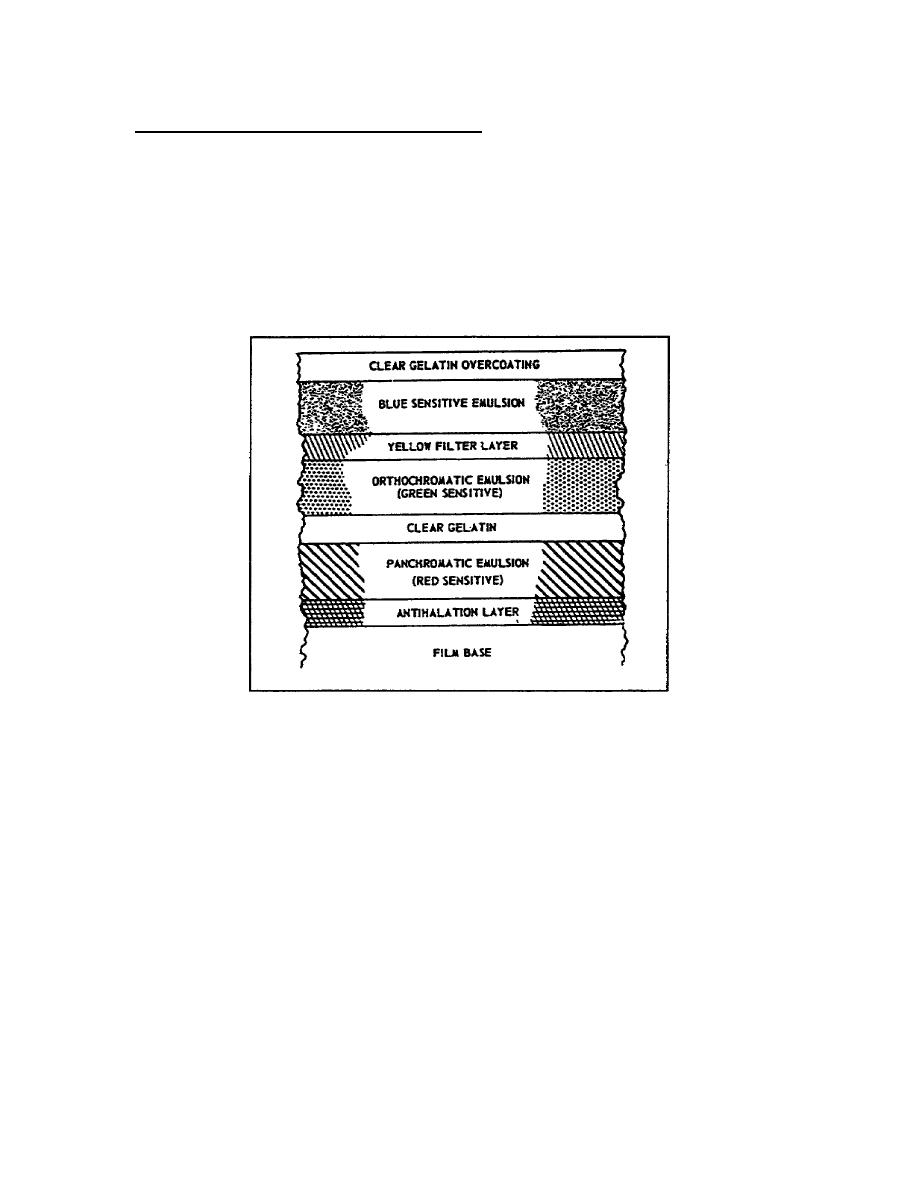
PART A - COLOR NEGATIVE FILM CHARACTERISTICS AND EXPOSURE
1.
Color Negative Film Characteristics.
There are many color films available made by different companies. All have
variable characteristics in relation to speed, grain, resolving power, and
color balance.
Speed now ranges from International Standards Organization
(ISO) 25 for Kodak Ektar Film up to ISO 1600 for Kodak Ektapress.
Figure 2-1 shows a cross-section of a typical color film.
Starting at the
top and working down the diagram the layers are as follows:
a. An anti-abrasion overcoating protects the film from minor abrasions.
Figure 2-1.
Structure of color film
b. The blue sensitive emulsion layer is where the blue record is made.
c. The third layer is a built-in colloidal silver, yellow filter. The
purpose of this filter is to absorb blue so that only green is recorded in
the next layer.
d. The orthochromatic layer is where green is recorded.
e. Red is recorded in the panchromatic emulsion.
This
emulsion is manufactured with a very low sensitivity to green
2-2
SS0514



 Previous Page
Previous Page
